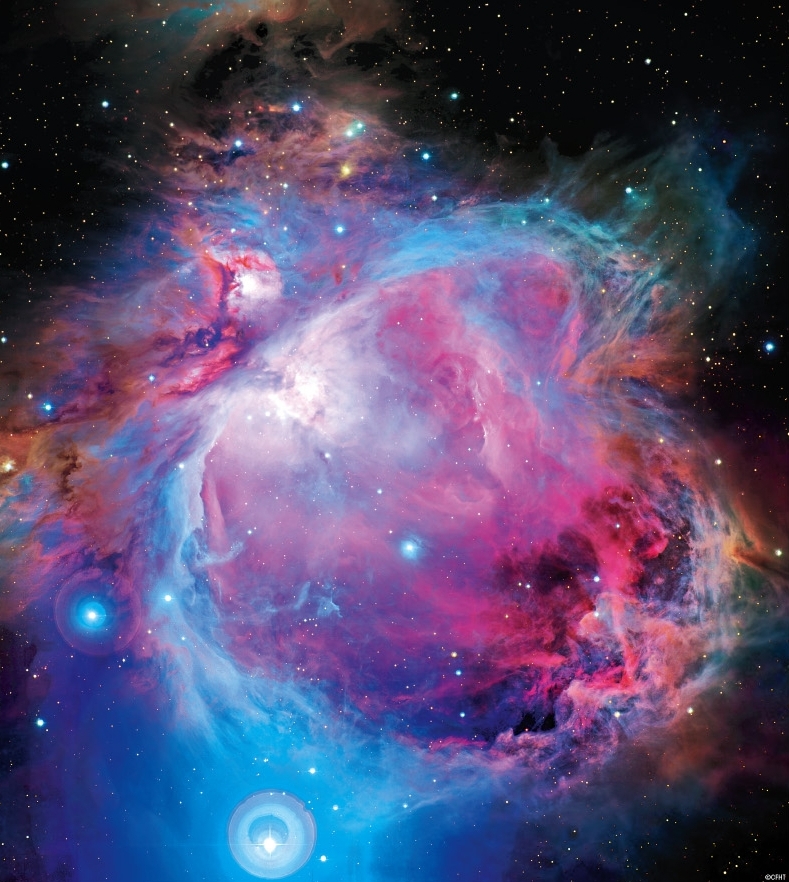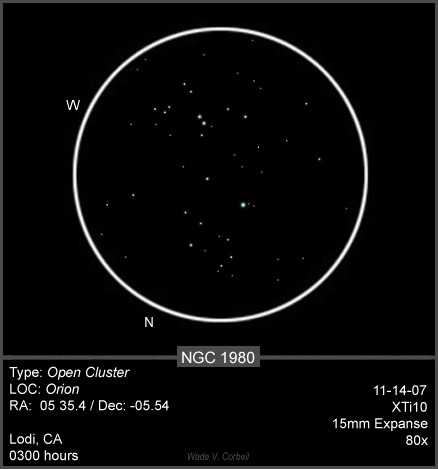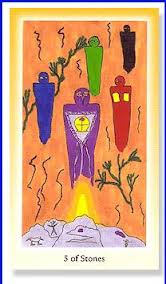Jun 7, 2013 | Goddard, Random Thoughts, The Writing Life
Once upon a time, when I was in a moment of artistic crisis, a dear, talented, compassionate and necessary writer told me this: “We write to clear a path in the forest that others may follow and then step off of to create their own paths.”
Today, on her blog, she writes, “What troubles me about rejections is that perhaps the audience I imagine for this work is not right, or doesn’t exist. Maybe I’m the only one interested in the things I write about. And if I am my only reader, then I don’t really need to write it, do I?”
Last night, I was reminded of the story of the Emperor’s new clothes, and how it takes only one small voice saying “Look at that man’s dinky!” to show us all, immediately, that we are being lied to. We ARE being lied to. The artist is the person who knows.
You are not your only reader, Elena. You are not the only one interested in identity and fitting in and cruelty and family and isolation and food and inheritance and war and trauma and equality and racism and freedom and love and all the other things you write about. We live in a society in which we all agree that Monday morning is the time we get up and go to work, and that work and what we get paid for it is the measure of our self worth. That is only an agreement – and a silly one at that – and we can change it anytime we decide to agree on something else. But without artists, we will never see the nakedness of our arbitrary collective decisions and make a change.
May 10, 2013 | Hiroshima in the Morning, Motherhood in the Media
On CNN/Opinion today, a piece about motherhood.
When Brenda Heist, the latest “runaway mom” reappeared, I was drawn back to the response I got to my own story of “leaving my children.” Yes, there were the threats, but there were also many women who showed me that I was not alone. From the article:
“I have heard from women who were escaping bad relationships, women who had to move for work, women who had been swallowed up in caregiving and enabling. I heard from women who were unfulfilled, unhappy and confused, and others who were paralyzed, frozen, and convinced they were failing their children. They were terrified and guilty about their situation and choices. One woman, who spoke for so many, wrote:
“‘There is such a horrible stigma to not being a full-time mother, and I tend to shy away from letting the mommies in my online parenting community (which I’ve been with since they were infants) know that I’m choosing not to have the kids live with me. It’s looked at as such a selfish decision, but I chose it because it was truly best for them, even though it does cause me intense pain.
“‘So again, thank you for speaking up, and giving me reassurance that my kids will not be permanently damaged by not living with me, but that doing the best I can for them and myself will make them more successful in the long run.'”
Thank you for writing, each and every one. I have not forgotten your words.
Full article can be found here.
May 1, 2013 | Our Nuclear Age, Random Thoughts
We knew this was coming, but where do we go from here?
After dumping 11,500 tons of radioactive water into the sea within a month after the Fukushima meltdown began, in violation of international law, TEPCO continued to store a flood of radioactive water, assuming that – someday, somewhere – it could be cleaned and disposed of.
From the New York Times on Monday:
“Groundwater is pouring into the plant’s ravaged reactor buildings at a rate of almost 75 gallons a minute… A small army of workers has struggled to contain the continuous flow of radioactive wastewater, relying on hulking gray and silver storage tanks sprawling over 42 acres of parking lots and lawns. The tanks hold the equivalent of 112 Olympic-size pools.
“But even they are not enough to handle the tons of strontium-laced water at the plant …. In a sign of the sheer size of the problem, the operator of the plant, Tokyo Electric Power Company, or Tepco, plans to chop down a small forest on its southern edge to make room for hundreds more tanks, a task that became more urgent when underground pits built to handle the overflow sprang leaks in recent weeks.
“‘The water keeps increasing every minute, no matter whether we eat, sleep or work,’ said Masayuki Ono, a general manager with Tepco who acts as a company spokesman. ‘It feels like we are constantly being chased, but we are doing our best to stay a step in front.'”
Apr 24, 2013 | Random Thoughts
On days when humanity feels small, violent, afraid; when we are killing each other, here and in other countries; when we are stripping each other of our rights; poisoning and raping our children; when it hurts so much to think about who we have lost, who we have maimed, what we have destroyed…it is worth remembering that this is what the universe looks like:

This is the star cluster, NGC 1980 in Orion, as seen through the Canada France Hawaii Telescope, where I once worked for a summer as a college student. This is what it looks like to our eyes:

We are bigger, better, more beautiful than we appear to ourselves (even Dove knows that). We can choose to see ourselves, and each other, as we are in truth.
Apr 5, 2013 | Random Thoughts
Yesterday, I was on my way to a meeting about the college process for my high school junior when a different experience presented itself. The man sitting across from me on the subway – seemingly intoxicated, bag in a bottle, belt loops tied together to keep his pants on – stood up and then suddenly dropped, unconscious and face first onto the floor of the car. There was a crunch (his head) and screams (from some of us around him) and a splatter of blood from a cut above his eye. There was a pause, a circle created as passengers stepped away; he lay motionless until he reared up, howling, blood on his face and hands, and then there was someone there, crouched on the ground beside him to calm him down.
The man who came to his aid was not a doctor. He was a passenger who could ask for napkins, who could ask the injured man for his name, his age, who knew to try to keep him conscious; who (whatever you might think of the wisdom of this) held the bloody napkins to his head stop the bleeding until a half an hour later when an emergency medical team finally arrived. He, and a young woman who joined him, made sure that the injured man knew he was not alone by talking to him, touching him, by knowing instinctively how to live in a world where we are more the same than we are other. The same world where MTA personnel are prohibited from touching anyone, and where some of the other people on the platform used the shock and confusion in the car to grab an empty seat and watch the show.
Apr 3, 2013 | Hiroshima in the Morning, Our Nuclear Age
Although these studies aren’t making headlines in major news outlets, researchers are beginning to track the Fukushima fallout in humans. In Japan:
“The Tenth Report of the Fukushima Prefecture Health Management Survey, released earlier this week, with data up to January 21, 2013, revealed that 44.2 percent of 94,975 children sampled had thyroid ultrasound abnormalities. The number of abnormalities has also been increasing over time as well as the proportion of children with nodules equal to and larger than 5.1 mm and any size cysts have increased. The report has also revealed that 10 of 186 eligible are suspected of having thyroid cancer as a result of the exposed radiation.” (Read the full article here)
And in the United States, a study in the Open Journal of Pediatrics found that more than one-quarter of the children born in Alaska, California, Hawaii, Oregon and Washington in the first four months after the meltdown had thyroid abnormalities. According to Common Dreams:
“Congenital hypothyroidism results from a build up of radioactive iodine in our thyroids and can result in stunted growth, lowered intelligence, deafness, and neurological abnormalities… Because their small bodies are more vulnerable and their cells grow faster than adults’, infants serve as the proverbial ‘canary in the coal mine’ for injurious environmental effects.”
Shortly after the meltdown began, I talked with Joy Behar on her show about the effects of radiation on the atomic bomb survivors in Hiroshima, some of whom I interviewed for my memoir, Hiroshima in the Morning. Radiation is invisible, and easily dismissed as being prevalent in the atmosphere. The effects of radiation are obscured (at least as far as many scientific studies) by other factors in modern life. But that does not mean that they do not exist, or that they will fade away. Nearly seventy years after the first atomic bombing, we are still unable to protect ourselves from the literal fallout of our own poisonous creations.
Mar 19, 2013 | Goddard, Random Thoughts, The Writing Life
Just came back from Vermont, where I did a number of readings with Rachel Pollack‘s Shining Tribe Tarot, and this card, the Five of Stones, came up several times. It meant, variously, You are healed; Healing is coming; Embrace your role as a healer; and Aspects of yourself that you gave up are returning to be reclaimed. This morning, finally back at my desk, an email from Rob Brezsny’s Truth and Beauty Lab mused on the experience of healing and love by quoting Rachel:
“We cannot predict the results of healing, either our own or the world around us,” she said. “We need to act for the sake of a redemption that will be a mystery until it unfolds before us.”
I look forward to that unfolding.

Mar 5, 2013 | Goddard, Hedgebrook, The Writing Life
As I sit in my new office working with my advisees at Goddard, revision is on everyone’s mind. My colleague, Elena Georgiou, says revision is what separates the women from the girls, and years into my third and fourth books, I can claim my full womanhood. Revision is writing, and at its best, it should be fun. After all, our pages are not a clay pot or an oil painting. We can revise to our heart’s content, throw out, get messy, and return to the original if we have proven to ourselves that we really did have it right the first time. There is no harm in revision for writers, only the chance for surprise.
Recently, Ruth Ozeki shared with me her story of the revision, and re-envisioning (not to mention the massive throwing out of pieces), of her new novel A Tale for the Time Being. Her words, which follow, are part of a larger interview I did with Ruth that is published on SheWrites. You can find the full “Five Questions” here.
From Ruth:
“I can date Nao’s voice back to the fall of 2006. That’s when I first heard her, and that’s when I wrote down those first lines. But I can also trace a lot of what wound up in the book to earlier times. I’d been haunted by the diaries of the Japanese kamikaze pilots ever since I first started reading them in 2001. And, too, my interest in human-computer interface design started back in 2005, when I was the Katzenstein Artist-in-Residence at MIT.
“This novel emerged very slowly. I knew from the first that one of the protagonists was a young girl, Nao, who is writing a diary. I knew that Nao was speaking across time and that she needed a reader. My first impulse was to put myself in the novel, but then I rejected this idea because it felt too self-conscious, metafictional and annoyingly PoMo, so I set about auditioning other readers for Nao. I went through four or five Readers, each one worse than the next. Some were female, most were male, one was some kind of amorphous, ageless, unformed smear of a character, neither male nor female, who lived in a library.
“By end of 2010, I finished a draft I was reasonably happy with, or if not happy, at least I felt I’d gone as far as I could go by myself. I submitted it to my agent and we were getting ready to submit it to my editor when, in March of 2011, the earthquake hit Japan, followed by the tsunami and the meltdown at Fukushima. Day after day I watched this disaster unfold. It was absolutely terrifying and heartbreaking. Over night, everything had changed. Japan had changed. The world was no longer the same, and a byproduct of this seismic upheaval was that the novel I’d written was now utterly irrelevant. So I withdrew it.
“That May, I went back to work. The novel is told as a kind of dialogue, with two interleaved voices, Nao and the Reader. I realized that Nao’s voice was still fine. The problem was the Reader I’d written. So I unzipped the manuscript, threw away that Reader and stepped into the role myself, as the character of Ruth. What had felt gratuitous and self-conscious five years earlier, now felt necessary. Stepping into the role myself and responding to it seemed to be the only way of acknowledging the magnitude of the disaster, and once I did this, the writing came very very quickly. I started in May and finished in November.”
Feb 14, 2013 | Events, Hedgebrook, Random Thoughts
What a fantastic day in Washington Square Park. So many dancing here, all over the city, all over the world. Thank you to all the beautiful creatures, men and women, dancing for peace, love, equity, joy, freedom.
Feb 5, 2013 | Events, Hedgebrook, Random Thoughts
One of every three women on the planet will be raped or beaten in her lifetime. That is ONE BILLION mothers, daughters, sisters, partners, and friends. Yet, most of the world remains silent and indifferent. The time has come to put a stop to the violence, and to the silence that surrounds it.
On February 14th, 2013, one billion women and those who love them are invited to walk out, rise up, dance, and strike to demand an end to violence against women and girls.
ONE BILLION RISING.
Sign up or get more information at: onebillionrising.org. Like: facebook.com/vday. Tweet: @VDAY with the hashtag #1billionrising
Watch this beautiful video (I don’t know why I can’t embed it correctly!): Man Prayer One Billion Rising
And if you are in New York and want to join me and hundreds of others in the flash mob in Washington Square Park, come learn the dance with us:
KJ Grow will be offering rehearsals free of charge and open to all on the following dates:
- Sunday, February 10, 5:30pm-6:30pm at Dancewave (45 4th Ave in Brooklyn)
- Wednesday, February 13, 6-7pm at 440 Studios, Studio 4F (440 Lafayette St in Manhattan)
Other opportunities to learn the dance:
- Saturday, February 9, 2-3:30pm at 440 Studios, Studio 4A (440 Lafayette St, Manhattan)
- Monday, February 11, 8:30-9:30pm at 440 Studios, Studio 4C (440 Lafayette St, Manhattan)


